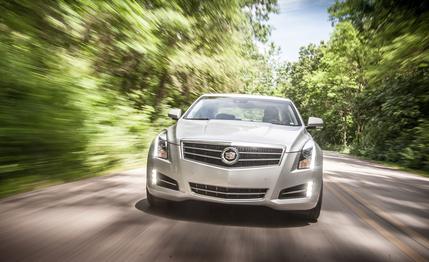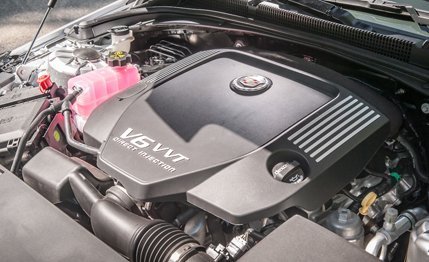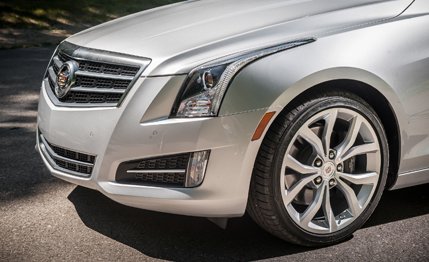 Instrumented Test
Instrumented Test


After five years of development and countless Nürburgring Nordschleife hot laps, Cadillac engineers finally handed over their new ATS to us for a few hours of road driving and instrumented testing. One day with GM’s first Alpha-platform car was enough to confirm that the ATS is the real deal—a true compact sports sedan with the size, specs, and speed to run with the segment’s aristocracy, especially BMW’s 3-series.
The ATS offers three engines, two transmissions, rear- or four-wheel drive, four trim packages, half a dozen wheel and tire combinations, and a tempting list of infotainment options capable of lifting the $33,990 base price above $50,000. Because the turbocharged 2.0-liter stick-shift ATS we begged for wasn’t ready, we tested what Cadillac’s vehicle line executive Dave Leone considers his hot setup: a rear-drive, 3.6-liter ATS equipped with 18-inch summer run-flat tires, Brembo brakes, and adjustable magnetic-ride-control dampers. The top engine, a $3605 option, comes standard with a six-speed automatic. Loaded with Premium Collection trimmings, including Cadillac’s new CUE (Cadillac User Experience) center-stack interface and heated seats and steering wheel, our test car’s sticker read $48,190.

With or without traction control enabled, the ATS bolts from rest with a growl. The 3.6-liter, DOHC V-6 makes 321 horsepower (21 more than a 335i) and 267 pound-feet of torque (33 less than the BMW’s turbocharged 3.0-liter six). The Hydra-Matic transmission upshifts crisply at the engine’s 7000-rpm redline, pushing the ATS to 60 mph in 5.4 seconds and through the quarter-mile in 14 flat with a trap speed of 102 mph. Those figures are dead even with the Infiniti G37 Sport’s and within a couple of tenths of the aforementioned 335i’s, though well behind the performance of the torque-and-traction-rich Audi S4. The ATS tops out at a governed 152 mph, which is within a couple of ticks of the key incumbents.
Circling GM’s perfectly smooth, 300-foot-diameter skidpad, the ATS ran out of grip at 0.88 g with the same juddery understeer we’ve seen in the F30-generation 3-series. Modulating the throttle helps tighten the line by sticking the front tires, but that technique works only up to a point. Likewise, a heavy foot on the gas won’t swing the tail. While the grip levels provided by the ATS are a touch lower than major competitors’, every last bit of its lateral traction is within easy reach, bolstering real-world confidence.

Before we started testing, Leone boasted how well the Brembos and Bridgestones collaborate during aggressive stopping. Our test results—a 70-to-0 braking distance of 158 feet, with no fade after six stops—prove he wasn’t exaggerating. Move the ATS to the head of the class in the braking category.
Upon completion of our test regimen, performance manager Robert Kotarak chaperoned a short, sweet back-road drive north of GM’s Milford, Michigan, proving grounds. Settling into the ATS cockpit is easy, thanks to ideally situated primary controls, excellent sightlines, a nicely crafted steering wheel, and a properly bolstered driver’s seat. The roof pillars are narrower than on most new sedans, and our only visibility gripe regards annoying rear-window reflections caused by bright sun bouncing off the light-toned package shelf.